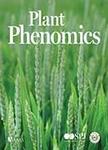Computing on Phenotypic Descriptions for Candidate Gene Discovery and Crop Improvement
作者机构:Interdepartmental Bioinformatics and Computational BiologyIowa State UniversityAmesIA 50011USA Department of GeneticsDevelopment and Cell BiologyIowa State UniversityAmesIA 50011USA Department of AgronomyIowa State UniversityAmesIA 50011USA
出 版 物:《Plant Phenomics》 (植物表型组学(英文))
年 卷 期:2020年第2卷第1期
页 面:118-121页
核心收录:
学科分类:0710[理学-生物学] 0501[文学-中国语言文学] 0303[法学-社会学] 0502[文学-外国语言文学] 0601[历史学-考古学] 1302[艺术学-音乐与舞蹈学] 1301[艺术学-艺术学理论] 07[理学] 071007[理学-遗传学] 0901[农学-作物学]
基 金:We thank the Iowa State University Plant Science Institute Faculty Scholars and the Iowa State University Predictive Plant Phenomics graduate students for helpful discussions on the topics discussed in this manuscript.The authors were supported by an Iowa State University Presidential Interdis-ciplinary Research Seed Grant(CJLD),an Iowa State Univer-sity Plant Sciences Institute Faculty Scholar Award(CJLD),the Predictive Plant Phenomics NSF Research Traineeship(DGE-1545453 CJLD is a coprincipal investigator IRB and CFY are trainees),and a seed grant from National Science Foundation(OAC-1636865)that partially supported some work by IRB.
主 题:stores translating enable
摘 要:Many newly observed phenotypes are first described,then experimentally manipulated.These language-based descriptions appear in both the literature and in community datastores.To standardize phenotypic descriptions and enable simple data aggregation and analysis,controlled vocabularies and specific data architectures have been developed.Such simplified descriptions have several advantages over natural language:they can be rigorously defined for a particular context or problem,they can be assigned and interpreted programmatically,and they can be organized in a way that allows for semantic reasoning(inference of implicit facts).Because researchers generally report phenotypes in the literature using natural language,curators have been translating phenotypic descriptions into controlled vocabularies for decades to make the information computable.Unfortunately,this methodology is highly dependent on human curation,which does not scale to the scope of all publications available across all of plant biology.Simultaneously,researchers in other domains have been working to enable computation on natural language.This has resulted in new,automated methods for computing on language that are now available,with early analyses showing great promise.Natural language processing(NLP)coupled with machine learning(ML)allows for the use of unstructured language for direct analysis of phenotypic descriptions.Indeed,we have found that these automated methods can be used to create data structures that perform as well or better than those generated by human curators on tasks such as predicting gene function and biochemical pathway membership.Here,we describe current and ongoing efforts to provide tools for the plant phenomics community to explore novel predictions that can be generated using these techniques.We also describe how these methods could be used along with mobile speech-to-text tools to collect and analyze in-field spoken phenotypic descriptions for association genetics and breeding applications.



